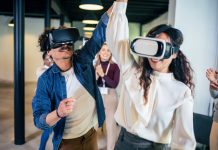Today, in Singapore, human capital management has changed tremendously over the last decade, with a massive influence from technological breakthroughs and game-changing business models. The nature of work, new technology, and the needs of a multigenerational workforce are converging to change the way work gets done and how employees contribute to a high-performing organization. As a result, companies are redesigning their people management strategies, moving from traditional annual pulse checking and employee ranking to focusing on what employees can do to increase their contributions instead of only looking at “proving” (validating) what they’ve completedin the past.
The other primary goal is to align employees’ performance with business objectives that yield the greatest results. Building this synergy of employees’ performance will significantly impact how business goals are achieved. Synergizing performance requires full commitment from stakeholders, as well as making resources available and accessible to employees. Careful integration of personalized SMART (specific, measurable, attainable, relevant, timely) goals and regular check-ins by managers to provide timely feedback and coaching provide the foundation for fostering the desired business performance.
LEARN: 5 Reasons to Build Synergized Performance
In Southeast Asia, organizations increasingly face the challenge of how to achieve performance management success. Organizations typically spend a significant amount of time and resources on performance management activities. A recent study conducted by a global consulting corporation reveals that 2 million manhours in a year are spent completing forms, holding meetings, and assigning and analyzing ratings.
Thus, it is essential for stakeholders to know what value the company is getting from investing in performance management and appraisals, and understand whether the time spent on those activities is being utilized effectively.
The current challenges faced by Human Resources (HR) and stakeholders are not merely optimizing work processes and bridging performance gaps, but rather how best to redesign and create value that aligns with business goals (mid- and long-term ones) in the most sustainable manner. HR and leaders need to take the lead in enabling the workforce to create synergies in their performance and business growth.
Five reasons a workforceneeds to build synergized performance can be found in the acronym LEARN:
- Leads to professional development and growth
- Encourages closer communications among inter-department collaboration
- Achieves higher performance standards
- Reduces operations waste
- Nurtures a culture of continuous improvement
Some key factors to consider when building a workforce to achieve synergized performance in an organization are the business goals, work processes, performance expectations, and the direction of organizational growth.
Besides covering these key factors, new disruptive business models and technology are becoming the game-changers in enabling the synergies sought by HR and their leaders.
Here’s how HR technology can help leaders and managers to synergize employees’ performance in the following areas:
- Automation: Software applications can play a significantrole in automating traditionally manual processes (e.g., forms, enquiries, etc.).
- Economies of scale: Pooling common and shared resources can lead to more efficient processing of work and, in turn, higher productivity across the organization.
- Analytics: Today, the new generation of performance management systems provides a vast array of tools that can harvest critical information such as indicators, patterns, and trends of employee productivity for leaders to make decisions about their workforce.
- Integrative: Some performance systems can provide comprehensive solutions with interfacing capability to align with other business operating systems.
Regardless of which intervention (especially, face-to-face) the organization chooses to adopt, it will still be more personalized to engage employees with regular coaching and feedback. Key stakeholderscan play a huge part in connecting the people practices that align with organizational values and business goals.
The Takeaway
Nobody will claim it will be an easy journey to enable and synergize employee performance. Building sustainable performance enablement requires time, effort, involvement, and commitment from all stakeholders. Leveraging the use of performance enablement HR technologies empowers everyone in the organization to become self-directed achievers.
Johnson Wong is a Learning strategist and director of Empower Training and Consultancy Pte Ltd., where he provides services for clients in learning design, learning technology solutions (e-courses), business design, human capital development, and training advisory.




